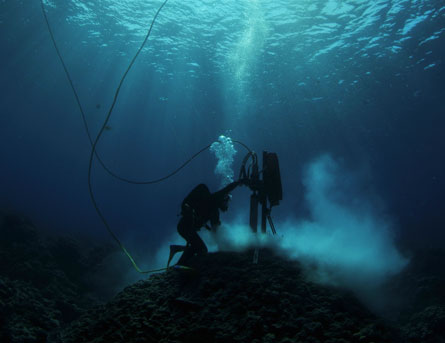Corals on Australia’s Great Barrier Reef have fallen on hard times recently. But on the opposite side of the continent, their West Coast brethren have been living the good life for at least a century, a new study finds.

Global warming may be helping these creatures out — at least for now. “To date, it is the changes in temperature that are having the dominant impact on coral growth,” says Timothy Cooper, a marine biologist at the Australian Institute of Marine Science in Crawley.
To compare how reefs in different places have been doing, Cooper and colleagues collected samples of Porites coral at six spots off Australia in the southeastern Indian Ocean. Porites build skeletons with layers that, like tree rings, can be used to measure growth from year to year.
None of creatures had slowed their growth in the last 110 years, Cooper’s team reports in the Feb. 3 Science. Those at the southernmost sites have even been building reefs faster as surface waters there have warmed markedly.
On the Great Barrier Reef, the same type of coral is stressed. Porites grew 13 percent slower in 2005 than in 1990, a 2009 study found. This slowdown has been blamed on both warming waters and increases in ocean acidity caused by carbon dioxide. About a third of all atmospheric carbon dioxide emissions are soaked up by the world’s oceans, where the gas reacts to make carbonic acid. That lowers the water’s pH and the amount of dissolved carbonate, the raw material used by corals to build their skeletons.
Ocean acidification is expected to have an even greater effect at some of the higher latitudes surveyed in the new study, where dissolved carbonate is less plentiful to begin with. But Cooper and his colleagues found no sign that changing pH bothered any of the corals they sampled. While acidity may still be a problem in the long run, for now temperature seems to be the bigger factor, especially in high-latitude waters at the low end of the temperature range that Porites can tolerate. A bit of warmth seems to make the reef builders more comfortable and productive.
“It is good to see some corals doing well in the warming,” says Charles Sheppard, a marine biologist at the University of Warwick in Coventry, England. “But since most reefs are not marginal, that means little with respect to the gloomy prognosis for most reefs.”
Sheppard cautions that Australia’s West Coast may ultimately be heading for a downturn as well. Patches of coral in other parts of Western Australia have already been spotted bleaching — spitting out the symbiotic algae that keeps them alive — when struck by sudden surges of warm water. As waters continue to warm, all of Australia’s corals may one day find themselves squirming uncomfortably in the hot seat.






